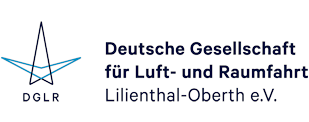DGLR-Publikationsdatenbank - Detailansicht
Autor(en):
M. Schatz
Zusammenfassung:
In industry, ALM experiences an unseen upswing. But despite its ease of manufacturing, structural engineers face the challenge to lift its whole lightweight design potential. In order to so, the authors elaborated a sequence of optimizations aiming to consider all structural aspects and to outbalance conflicting goals such as performance and weight. In this specific paper, an insert has been optimized so as to not only be lighter but also to sustain more load. The later was actually proven via testing. For the sake of comparison, a conventional milled insert was developed, build and tested as well. Live crack detection through acoustic monitoring during quasi-static and thermal testing revealed the superiority of the optimized and 3D printed part over the milled one.
Veranstaltung:
Deutscher Luft- und Raumfahrtkongress 2018, Friedrichshafen
Verlag, Ort:
Deutsche Gesellschaft für Luft- und Raumfahrt - Lilienthal-Oberth e.V., Bonn, 2019
Medientyp:
Conference Paper
Sprache:
englisch
Format:
21,0 x 29,7 cm, 4 Seiten
URN:
urn:nbn:de:101:1-2019010412505544932959
DOI:
10.25967/480063
Stichworte zum Inhalt:
3D Printing, Additive Layer Manufacturing (ALM), topology optimization
Verfügbarkeit:
Download
- Bitte beachten Sie die Nutzungsbedingungen dieses Dokuments: Copyright protected
Kommentar:
Zitierform:
Schatz, M. (2019): Optimal Design of a 3D Printed Sandwich Panel Insert. Deutsche Gesellschaft für Luft- und Raumfahrt - Lilienthal-Oberth e.V.. (Text). https://doi.org/10.25967/480063. urn:nbn:de:101:1-2019010412505544932959.
Veröffentlicht am:
04.01.2019
